Most turkey hunters never give this a second thought, but it could mean the difference between a bird in the bag or watching tail feathers disappear.
by the HuntDaily staff
Let’s face it…modern camo shotguns are a BIG problem for today’s turkey hunters.
“What?” you say. “Camo finish for scatterguns is the BEST thing to come along in the turkey hunting world!”
Well, yes and no.
Water-transfer camo finishes are awesome. They augment the turkey hunter’s concealment strategies in a big way, and the finish is great for preventing rust and scratches on the coated metal surfaces. Yet that very asset leads to an unforeseen problem for many hunters. Too often we forget that our shotguns still require regular cleaning and lubrication in order to perform reliably. This is especially true with pump or semi-autos.
If you are a dedicated run-and-gun turkey hunter, you may be surprised at all the crud and debris that can build up within your receiver. This fouling can lead to poor cycling performance and crunky trigger action, which can translate to missed shot opportunities due to a failure-to-fire condition or a failure-to-cycle condition during a follow-up shot. All this because that wonderful camo finish tends to make us forget that our turkey guns need periodic “deep cleanings” to keep them in top working order.
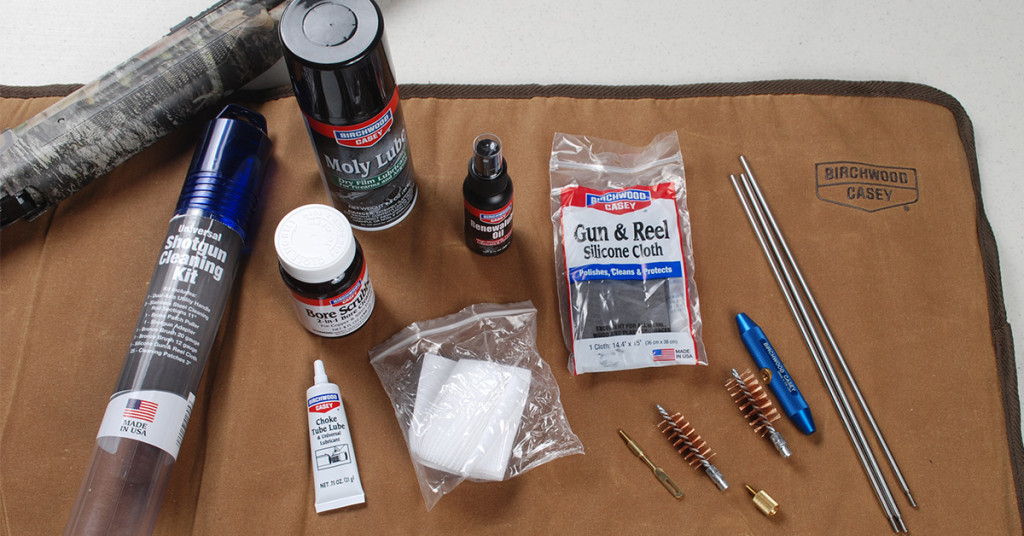
Deep cleaning your turkey gun is something you should do before you hit the woods and after you’re done for the season. It only takes a few supplies and a quality cleaning kit, such as the Birchwood Casey Universal Shotgun Kit and chemicals seen here, to get the job done quickly and effectively.
Before you head out this spring, give your shotgun the TLC it deserves. A deep cleaning followed by fresh lubrication should be performed before you pattern-test so you can be sure everything will run properly in the field. You should also do a teardown and clean at the end of the season. And, of course, periodic checks throughout the season are always recommended—especially when hunting in wet weather.
One of the things we like about a pump turkey gun is that they break down easily to their primary component assemblies. The two areas you don’t want to touch (unless you have a gunsmith friend who owes you favors) are the trigger assembly and the bolt assembly. Leave these to the pros. If you’re uncertain about how to disassemble your shotgun, dig out your owner’s manual or find the manual online. Most manufacturers have their manuals available for download.
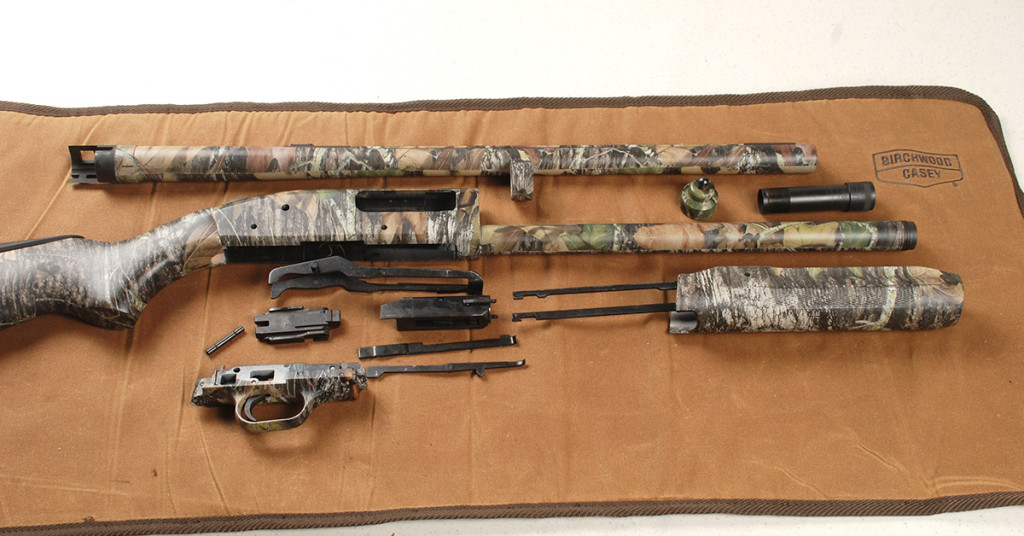
Our 500 Mossberg came apart easily. The only tool required was a small punch and hammer to tap out the trigger assembly retaining pin. As always, make sure there are no cartridges in the gun and it is rendered safe before performing any work. With your shotgun broken down to its primary components, it’s easy to thoroughly clean and lubricate your parts.
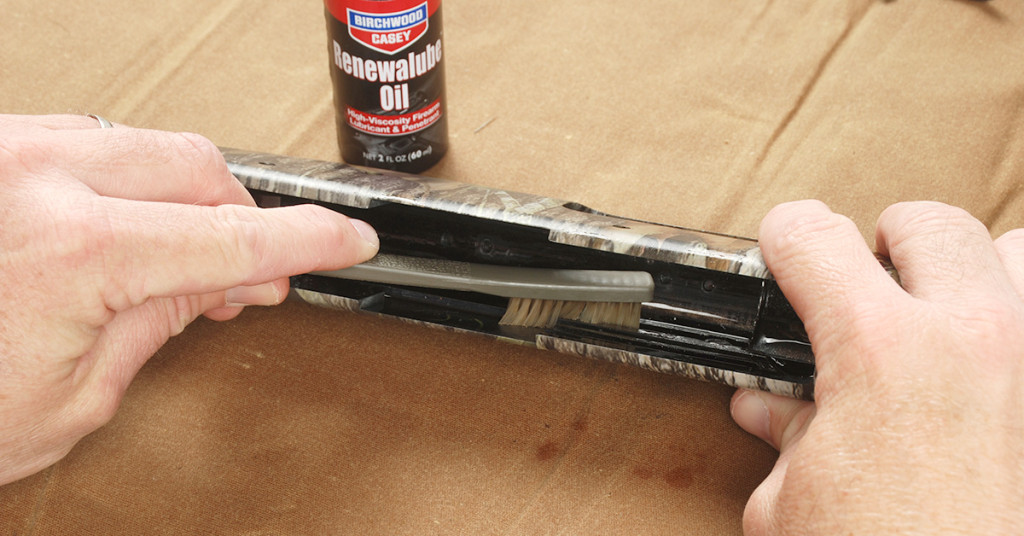
A lot of gunk can build up inside a pump shotgun receiver. Accumulated debris and lack of proper lubrication—especially along the bolt rails—can cause cycling issues and wear. We like to apply a generous application of penetrating lubricant, such as Birchwood Casey’s Renewalube Oil, to the receiver and scrub with a nylon brush to knock loose the grime.
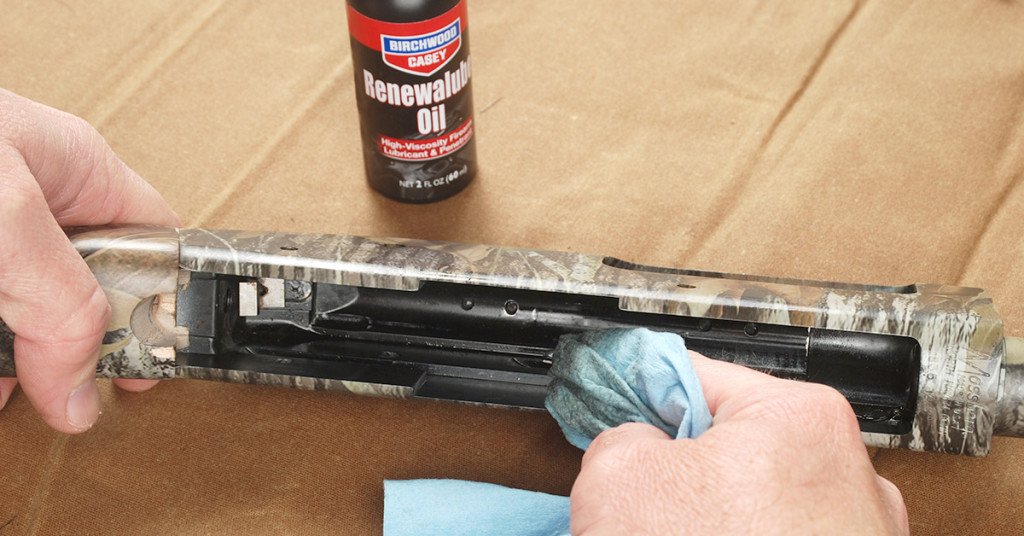
With an absorbent shop towel, you can now wipe out the lubricant and loose fouling so that the receiver is perfectly clean.
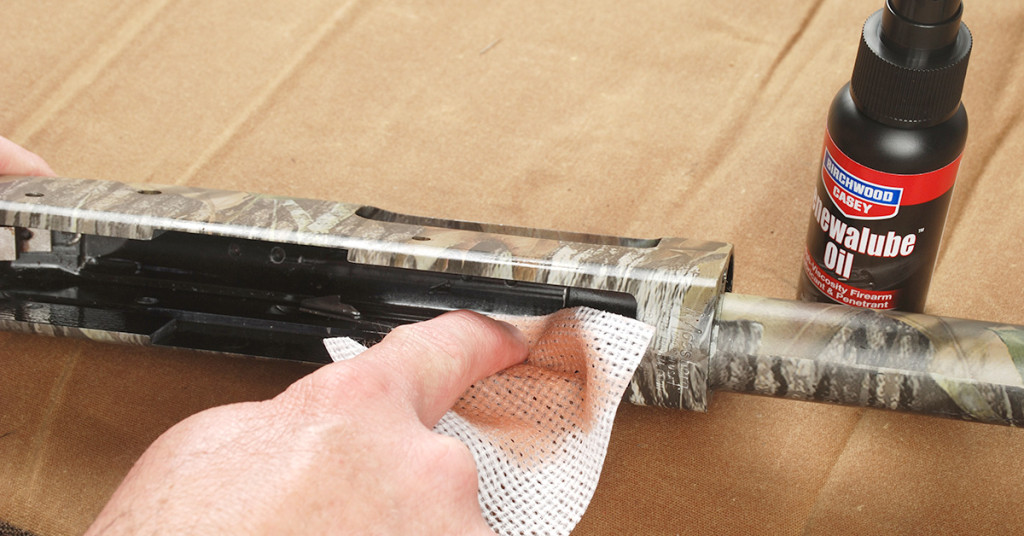
LIGHTLY coat the receiver with lubricant. Refer to your owner’s manual for any key lubricating points. You don’t want to over-lubricate because too much oil can attract and hold dust and debris. Pay special attention to lubricating the bolt assembly rails.
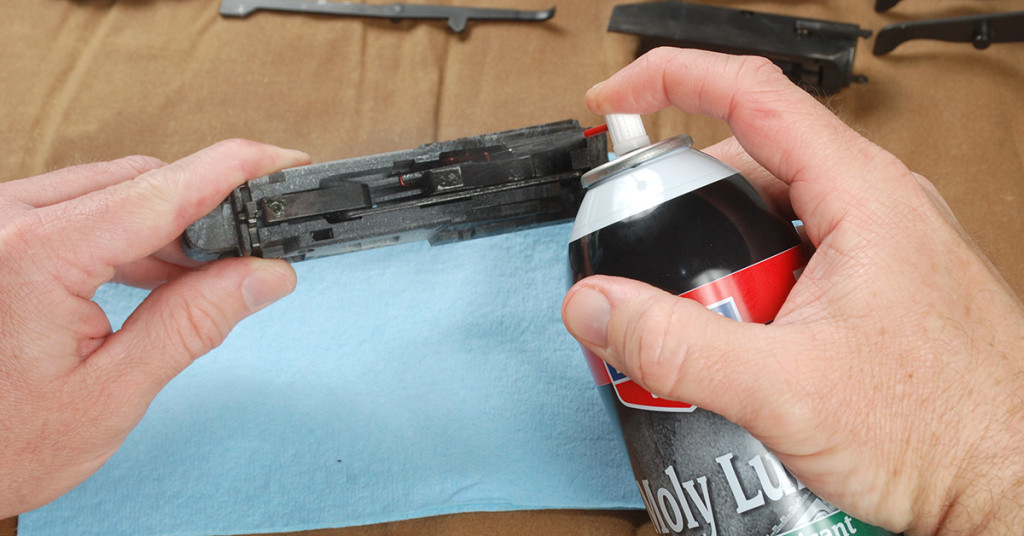
Disassembling the trigger group is a job best left to a gunsmith. That doesn’t mean the trigger assembly should not be cleaned and lubed. Apply a light coat of lubricant to the exposed metal components and wipe clean. Be careful not to let any loose debris fall into the assembly. For the final lubrication, we like to use a “dry” lubricant on hard-to-reach trigger assemblies because it penetrates deep into the cracks and crevices and then dries, leaving behind a lubricant film that’s perfect for moving parts. Our favorite is the Moly Lube Dry Film Lubricant. This product leaves a dry coating of Molybdenum disulfide on the parts that delivers a high friction coefficient without attracting or holding unwanted particulates.
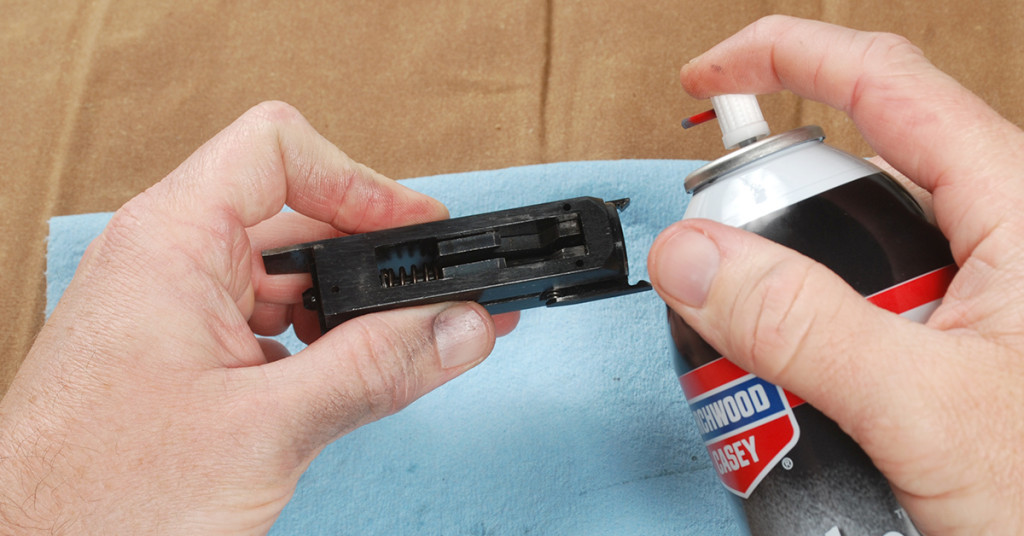
The bolt assembly is another component you should thoroughly clean with a lubricant and wipe down or scrub with a soft nylon brush. We also like Moly Lube for this sliding assembly, although Renewalube will also work well.
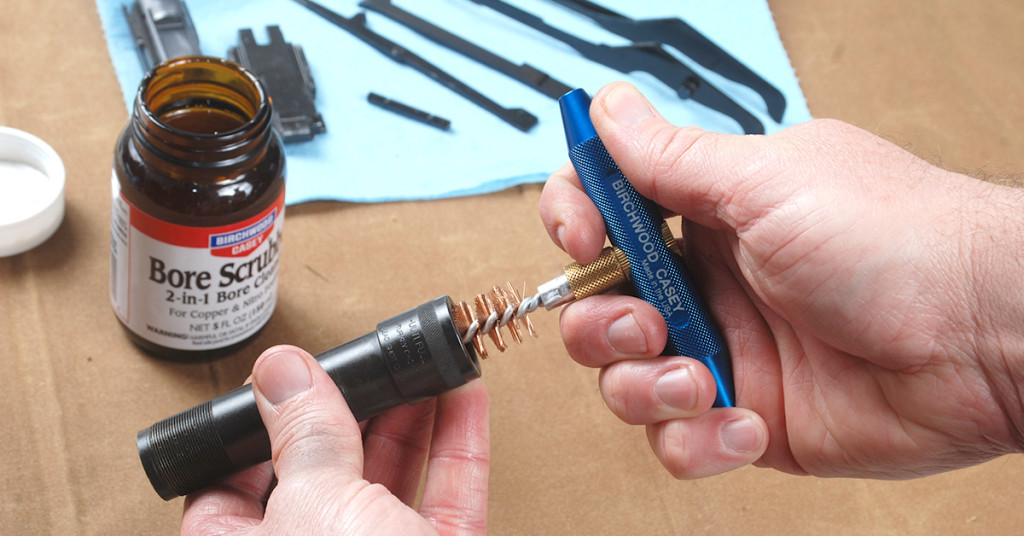
A proper deep-cleaning also means giving a little love to your choke tube. Choke tubes take a real hit and can build up with wadding, copper, carbon, and lead residue. Coat the inside of the tube with 2-in-1 Bore Scrubber and hit it with a brush to remove built-up fouling. Finish with a light coating of Renewalube inside and out.
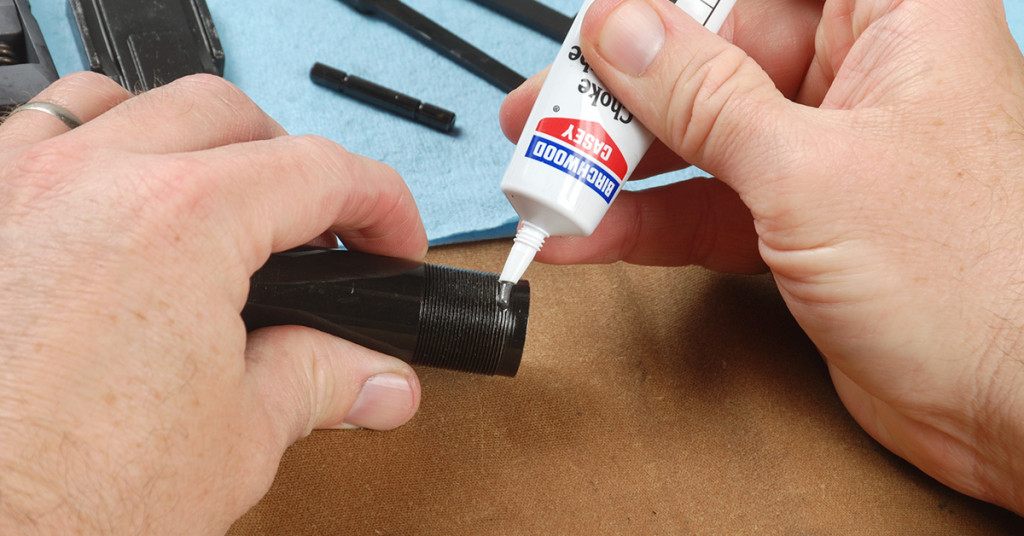
Corrosion can also be a problem with choke tubes that aren’t regularly removed and cleaned, allowing the threads to seize up in the barrel. After cleaning the tube, apply a thin coat of Choke Tube Lube Grease to the first few threads before screwing it back into the barrel. Do this and it won’t take a pipe wrench and a busted kidney to remove it in the future.
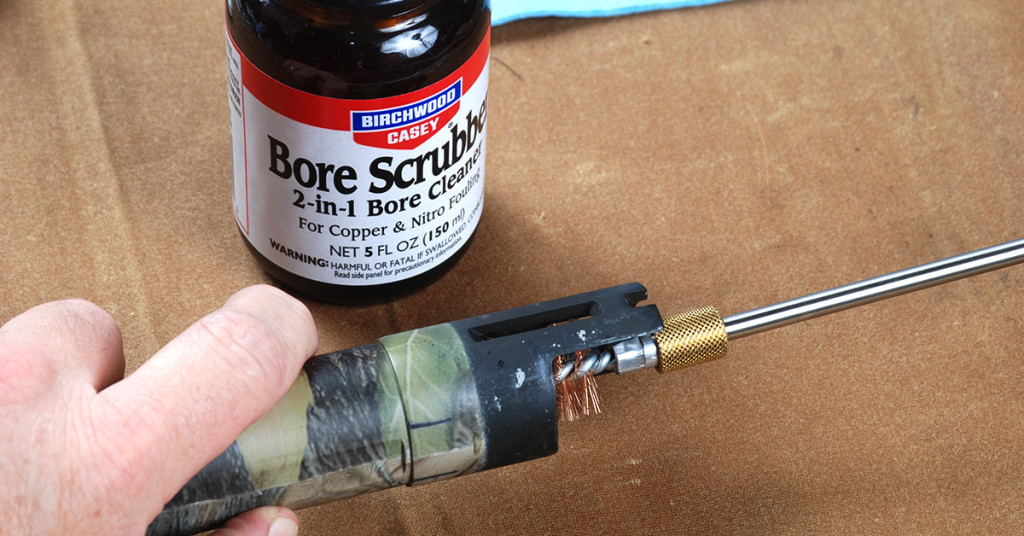
Barrel cleaning is a straight-up process. Again, dress the bore with 2-in-1 Bore Scrubber and run your brush through it a few times to hit the bulk of the accumulated fouling.
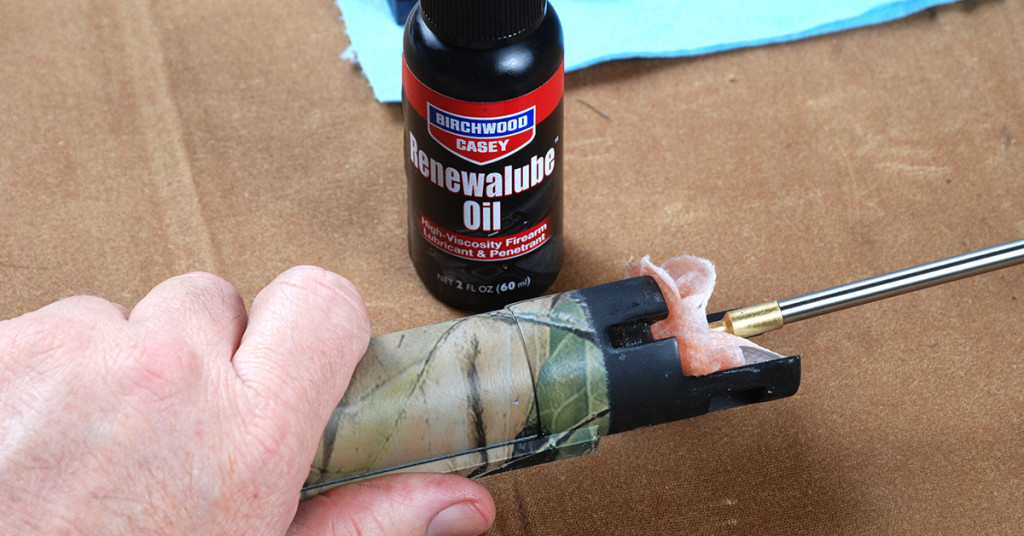
After swabbing out the barrel, run a lubed patch down the barrel to LIGHTLY coat the bore and your deep-clean is complete.
None of us enjoy cleaning our guns, but they do represent a major investment that needs to be maintained if they are to provide years of reliable service. And just because our turkey guns have a fancy camo topcoat on them doesn’t mean they are impervious to use and the environment. Take them apart, clean them, lubricate them, and you will be confident that your gun will be ready when that tom steps into the kill zone.
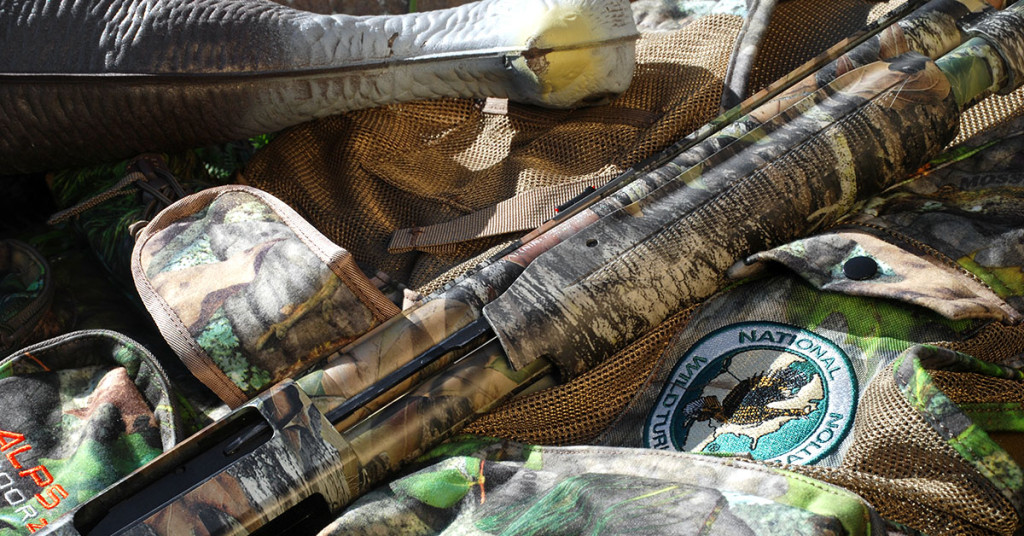
SOURCE
article copyright © 2017 HuntDaily.com; promoted by Birchwood Casey

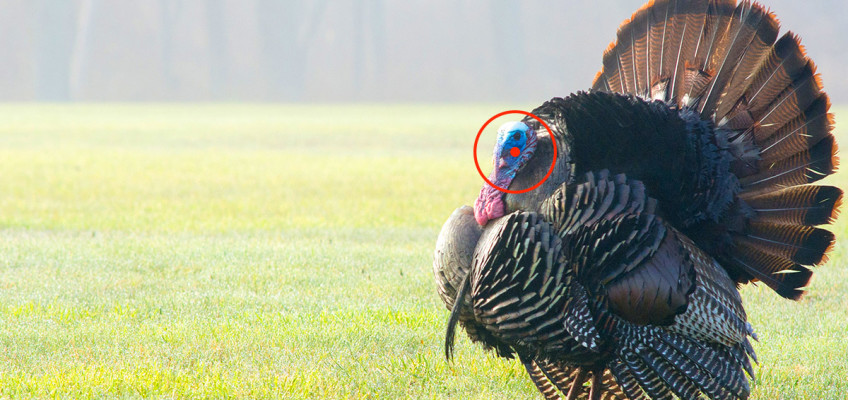
Leave a Reply